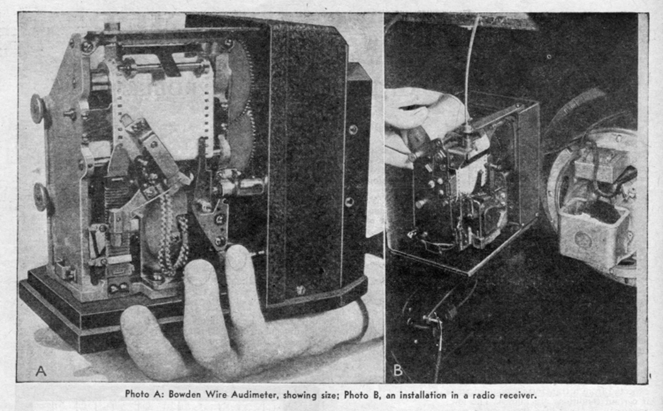For thousands of years, from ancient Mesopotamian markets to the modern-day yard sale, sellers have set their prices based, in part, on who was buying. In these transactions, prices can be targeted based on information the seller has about that customer, like their home address, their shopping history, or demographic makeup.
Technology has boosted sellers' ability to gather consumer data en masse. Early market research firms developed “Audimeters,” literal black boxes that consumers could attach to their radios or TVs, to collect and share information about the stations they listened to or shows they watched.
Those households willingly participated in that research. But now data collection has become common across devices, from smart cars to robotic vacuums to the phones in our pockets. Many consumers today are not actively aware that their devices constantly gather data about them, and that that data can be used to charge them more money for products and services. An age-old practice of targeted pricing is now giving way to a new frontier of surveillance pricing.
Recent media reports indicate that a growing number of grocery stores[1] and retailers may be using algorithms to establish targeted prices.[2] Advancements in machine learning make it cheaper for these systems to collect and process large volumes of personal data, which can open the door for price changes based on information like your precise location, your shopping habits, or your web browsing history.
This means that consumers may now be subjected to surveillance pricing when they shop for anything, big or small, online or in person: a house, a car, even their weekly groceries.[3]
Today, using its 6(b) authority, the Federal Trade Commission will begin studying whether and how firms are using detailed consumer data to deploy surveillance pricing for consumers. See press release here.
The 6(b) study seeks to understand how surveillance pricing works, including the types of data companies use to fuel their algorithms and where that data is sourced from. It also aims to uncover which companies, if any, are using these pricing technologies as part of their business.
The study will focus on intermediary firms, the middlemen enabling firms to algorithmically tweak and target their prices. By examining the actors involved, their technical tactics, and the pipelines that enable surveillance pricing, the Commission aims to understand the effects that surveillance technology has on consumers, including the prices they pay and the types of personal data that are used to determine those prices.
This 6(b) study builds on the agency’s century-long history of monitoring quickly evolving markets like the targeted advertising industry, and applying existing laws to new technologies that can impact consumers or competition. The Federal Trade Commission has championed countless efforts to prevent personal data from being used in unlawful ways; from filing cases against data brokers,[4] to unpacking the harms hidden in tracking pixels.[5] The agency has also illuminated lesser-known avenues where consumers are likely to have their data collected in the future, like connected cars,[6] health platforms, [7] and “privacy enhancing technologies.”[8]
The FTC has previously examined companies operating as middlemen in the technology stack, including notable data brokers,[9] and highlighted the potential for unauthorized use of people’s sensitive information—browsing data in the case of Avast and precise location data in the X-Mode and InMarket cases. The Commission also took enforcement actions against digital health platforms like GoodRx and BetterHelp, who were alleged to have shared patients’ health information with third-party advertising companies using tracking pixels.[10]
The use of surveillance technology and private data to determine prices is a new frontier, and the Federal Trade Commission looks forward to bringing more information about this practice to light.[11]
[1]https://www.npr.org/transcripts/1197958433
[2]https://www.forbes.com/sites/sap/2023/04/21/how-to-leverage-dynamic-pricing-as-competitive-advantage-during-times-of-high-inflation/
[3] https://www.moneytalksnews.com/how-target-snooped-on-shoppers-changed-prices-based-on-location/
[4]https://www.ftc.gov/policy/advocacy-research/tech-at-ftc/2024/03/ftc-cracks-down-mass-data-collectors-closer-look-avast-x-mode-inmarket
[5] https://www.ftc.gov/policy/advocacy-research/tech-at-ftc/2023/03/lurking-beneath-surface-hidden-impacts-pixel-tracking
[6] https://www.ftc.gov/policy/advocacy-research/tech-at-ftc/2024/05/cars-consumer-data-unlawful-collection-use
[7] https://www.ftc.gov/news-events/news/press-releases/2023/05/ovulation-tracking-app-premom-will-be-barred-sharing-health-data-advertising-under-proposed-ftc
https://www.ftc.gov/news-events/news/press-releases/2021/06/ftc-finalizes-order-flo-health-fertility-tracking-app-shared-sensitive-health-data-facebook-google
https://www.ftc.gov/news-events/news/press-releases/2023/02/ftc-enforcement-action-bar-goodrx-sharing-consumers-sensitive-health-info-advertising
[8] https://www.ftc.gov/policy/advocacy-research/tech-at-ftc/2024/02/keeping-your-privacy-enhancing-technology-pet-promises
[9] https://www.ftc.gov/policy/advocacy-research/tech-at-ftc/2024/03/ftc-cracks-down-mass-data-collectors-closer-look-avast-x-mode-inmarket
[10] https://www.ftc.gov/business-guidance/blog/2023/03/ftc-says-online-counseling-service-betterhelp-pushed-people-handing-over-health-information-broke
[11] https://www.moneytalksnews.com/how-target-snooped-on-shoppers-changed-prices-based-on-location/

